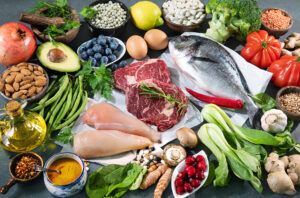The United States Department of Agriculture found that blueberries and green beans are now also contaminated with pesticides. Every year the Department of Agriculture tests foods for residual pesticides they publish a list of the 12 most contaminated crops.
This list carries the name “Dirty Dozen”. This helps the consumer to avoid these crops and alternatively buy the organic versions instead. Organic crops do not contain these pesticides.
Test results about the Dirty Dozen List in detail
Similar to 2022 spinach and strawberries were the most contaminated crops. Kale, collard and mustard greens were the next three greens on the contaminated list. Peaches, pears, nectarines, apples, grapes, bell and hot peppers, and cherries were also on the list. Blueberries and green beans made it in position 11 and 12 on the contaminated list.
In the 12 foods on the contamination list researchers found a total of 210 pesticides. Kale, collard and mustard greens had the highest amount, namely 103 types of pesticides. Hot and bell peppers followed suit with 103 pesticides.
Jane Houlihan, former senior vice president of research for the Environmental Working Group (EWG) was not involved in the report. She said about pesticides: “They are intended to harm living organisms, and this inherent toxicity has implications for children’s health, including potential risk for hormone dysfunction, cancer, and harm to the developing brain and nervous system”.
The clean 15 list
The same research food list also produced the “clean 15” list. This is a list, which contains crops you can buy from your grocery store without worries about crop contamination. 65% of the foods on this list had no detectable pesticide contamination. This means you can buy the regular crops from this list, which is somewhat cheaper than the organic list.
Here is the list: Avocados, Sweet corn, Pineapple, Onions, Papaya, Frozen sweet peas, Asparagus, Honeydew melon, Kiwi, Cabbage, Mushrooms, Mangoes, Sweet Potatoes, Watermelon and Carrots.
Acephate, phosmet and malathion found in crops
It was concerning to the researchers that they detected the outlawed organophosphates Acephate, phosmet and malathion in many fruits and vegetables. These chemicals interfere with the normal functioning of the brain. According to the CDC “a high dose of these chemicals can cause difficulty breathing, nausea, a lower heart rate, vomiting, weakness, paralysis and seizures” the CDC said. “If exposed over an extended time to smaller amounts, people may feel tired or weak, irritable, depressed, or forgetful.”
Alexis Temkin, a toxicologist at the EWG with expertise in toxic chemicals and pesticides said about organic foods:
“Many fruits and veggies with higher levels of pesticides are critical to a balanced diet, so don’t give them up, experts say. Instead, avoid most pesticides by choosing to eat organic versions of the most contaminated crops. While organic foods are not more nutritious, the majority have little to no pesticide residue”.
Conclusion
The Department of Agriculture has tested fruits and vegetables and published the current list of the Dirty Dozen. It also came out with the “Clean 15 list”. All of this is based on testing the contamination of crops and fruit with respect to insecticides. One new finding is that blueberries and green beans are both contaminated with insecticides. You now have to buy them in the organic version in order to protect yourself from ingesting insecticides. When a food item is on the clean 15 list you can buy the regular crop in a grocery store. But if a food item is on the “dirty dozen list” you must avoid buying the regular version of the crop or fruit. Spend the extra dollar and get the organic version. Your body will thank you for that.







